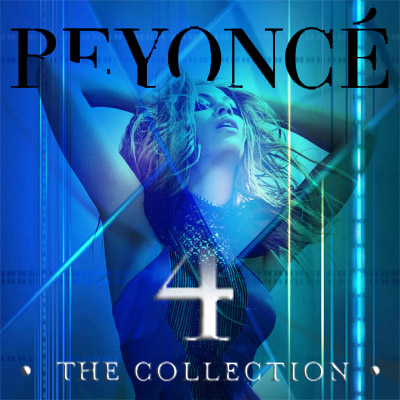According to Adam McLean‘s commentary of The Chymical Wedding of Christian Rosenkreutz, the alchemical sevenfold process reaches its material manifestation at the fourth station. This is the nadir of the spiritual process, after the “involutionary arc” in which the initial spiritual impulse descends, meets with opposition, synthesizes the impulse, and finally emerges into materiality. Jung saw the number 4 as indicative of the quaternity, symbolic of wholeness—four Western elements, four cardinal directions, four corners of a square or four points in a circle. Throughout the course of the artist’s work, we saw her solo emergence of Dangerously in Love, her encounter with her nemesis and beloved in B’day, the internal division and synthesis of I Am…Sasha Fierce, and now we see her forged into a greater whole: joyful, proud, and celebratory.

4 is the reconciliation and stabilization of the inner process of solve et coagula within Beyoncé’s persona, dramatized in I Am… Sasha Fierce. The fiercely sexual and wanly vulnerable halves of self have married into a greater whole. 4 is the wedding reception for this hieros gamos. Qualities of joy, celebration, and pleasure permeate many of the songs, particularly “Party,” “Love on Top,” and the ecstatic “End of Time.” The audience bears witness to the singer’s empowered confidence and self-worth. “Finally / You put my love on top,” the singer says to her Beloved, recognizing the recognition of her worth. Many pop romantic tropes emphasize images of incompletion without love and partnership—the Spice Girls sang that “2 become 1” in the romantic and sexual union, where Beyoncé distinguishes herself by emphasizing completion and partnership, declaring “I know 1 + 1 / Equals 2”.
The only sour note in this reading is the song “Rather Die Young,” an ode to the exhausted and problematic trope of self-negation-as-homage-to-love. Developmental processes are always incomplete, always containing encapsulated, unintegrated fragments of past and cultural complexes. “You make me feel like I’m seventeen,” she sings, noting that this relationship has activated an old complex not fully integrated into the mature self.
Individuation does not mean a departure from submission or servitude, but an enlivening of these innate qualities within the person. The artist’s work has always include a value of service toward her beloved, and songs such as “Dance for You” show this quality remains rooted within her love and art. She repeats over and over how she’s going to “show” her lover how much she appreciates and values his love and offers her dancing as gratitude and connection. There is no contradiction for the integrated self to be “a woman in the street and a freak in the you-know-what,” to recognize the value and worth of her sexuality and wield it in gratitude.
In “Girls,” the album’s first single, the singer brings her exaltation to her entire gender, asserting “My persuasion / can build the nation.” The former Virgin Queen has integrated her qualities of power, sexuality, and capacity to bear new life, noting that woman are “strong enough to bear the children / then get back to business.” Bearing children is one of her many capacities, but who she is is larger than any task, responsibility, or role, as she suggests in “Schoolin’ Life”:

I’m not a teacher, babe
But I can teach you something
Not a preacher
But we can pray if you wanna
Ain’t a doctor
But I can make you feel better
Through this refrain if “I’m not, but I can,” the artist claims myriad potentialities and integrates them into the I from a place of self-empowerment, not subsuming the I into an archetype or role. This is a hallmark of the individuated self, able to take part in the world without being defined by it, in touch with the foundational core of essence, who she truly is at heart.
In this reading, both the artist’s music and public persona are the alchemical workings that the artist is bringing to bear. Because life and art is process, neither she nor we can dwell forever in this space of celebration and achievement, or else it loses its value and freshness and begins to turn. From this nadir of the alchemical process, the manifested work now moves in an evolutionary arc, which mirrors the involutionary arc. The next stages are the experimental manifestations of the work’s energies, the difficulties encountered in expression, and the last mature expression of that initial spiritual impulse. From 4, the stable square, we move to 5, the pentacle of shifting and transformation.
Complete Jungian readings of Beyoncé’s work:

